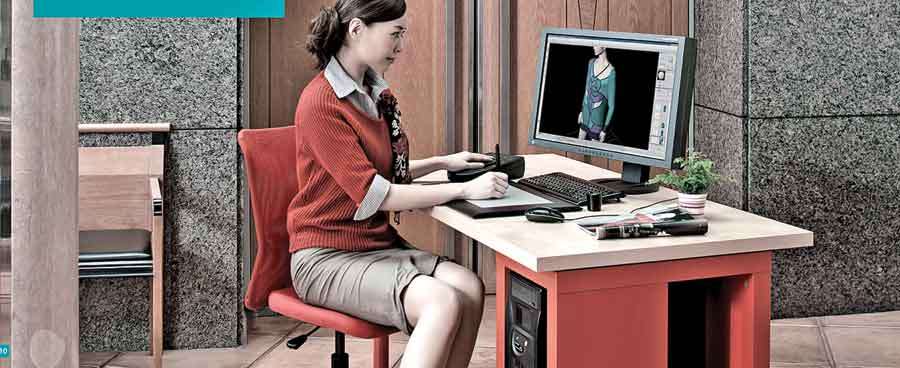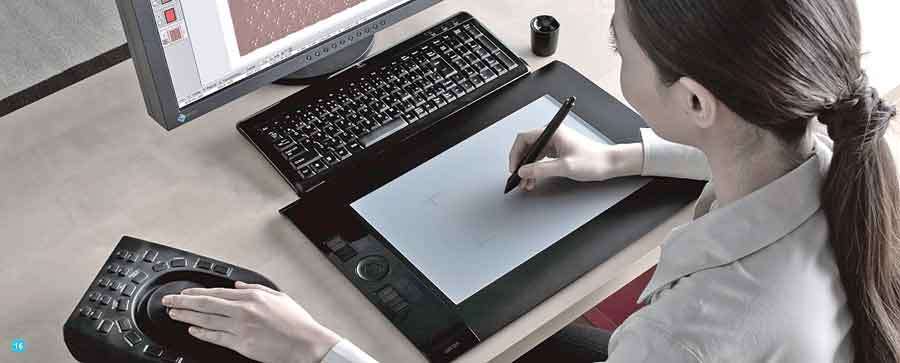In recent years India and Bangladesh have seen a significant increase in knit exports, and is receiving much attention as a worthy candidate for China-Plus-One manufacturing. At the same time, buyers are demanding quicker turnarounds for larger orders with more variety. A major transfer of technology from manual operation to computerized knitting is therefore highly anticipated. A leading manufacturer of seamless technology, computerized flat knitting machines, CAD/CAM systems and computer graphics, Shima Seiki has many solutions in its portfolio to meet these current needs, as well as needs for the foreseeable future, thus distinguishing itself as an innovative company with plenty of potential for the future of the south Asian knitting industry.

It is a known and well documented fact that it is the pre- and post-production processes which are the main reason for the delays in meeting customer’s timelines. It is the process of design and product development, sample approvals and the finishing and delivery which takes up maximum time and Shima Seiki with SDS®-ONE APEX3, a specialized hardware/software system covers the knit supply chain from yarn design to retail promotion. With its ability to support all aspects from planning, design, sampling and production to machine programming, merchandising and sales promotion, SDS®-ONE APEX3 has established itself the reputation as an all-in-one apparel design tool. It is a communication tool for bringing together people and ideas right down from the yarn maker to apparel planner, designer, knitter, merchandiser, and retailer, from different areas of the fashion industry all come together on a single platform to take design decisions and work on product concepts.
SDS®-ONE APEX3’s virtual sampling capabilities permit accurate evaluation using photo-realistic simulations without the need for costly and time-consuming pre-production sampling. For even more effective virtual sampling, it features 3D modelling capability as products can be checked in 3D using 3D simulation, 3D modelling, 3D fitting simulation and 3D mapping.

A user-friendly solution, the SDS®-ONE APEX3 consists of a pressure-sensitive cordless pen and digitiser tablet as well as a trackball unit with duplicate keys for often-used functions. A high-recognition menu features buttons for each software application with picture icons formed with 3D-like illustrations contributing to increased efficiency. A Work Menu is also available which features pre-registered workflow sequences for often used functions, which users can customize on an individual basis. Should the need arise online help is available as a reference aid.
Besides having many features such as Colour Management to cut time and cost by eliminating trial and error colour calibration for scanned-in or matching printouts to the display screen, to Yarn Design Tool, from designing original yarns from scratch to arranging existing yarns that are scanned-in, or simulating the twisting of several yarns together, realistic but virtual yarns can be used to create convincing fabric textures, thereby increasing the effectiveness of loop simulations and textile simulations for presentations to Knit Design Tool – in which the yarn loop simulation allows quick evaluation of virtual knitwear without sample-making. Various simulations can be performed for WHOLEGARMENT®, conventional flat knitting and circular knitted goods as well. There is also a vast database of jacquard, structure and other patterns. In addition, knit designs created in the paint program are simultaneously converted to knit programming data, so that designers and technicians can keep in close communication with each other over the same job.
Apparel Design Tool helps in designing sketches for textiles to apparels. A special colour-way menu featuring a licensed Pantone colour database provides accurate colour communication and can be combined with knit and weave textures for realistic effects. Automated pattern generation features polka dots, stripe/border patterns and argyles with their own database and program. Automatic pattern repeats for both normal and stepped repeats can be performed with controlled precision.
One of Shima Seiki’s greatest strengths – garment simulation – combines yarn data knit or weave simulation and texture mapping to yield incredibly photo-realistic images. All this allows the designer to concentrate on creativity rather than spend time on tedious sketches thereby reducing the lead-time significantly, and the realism achieved through virtual sampling provides the power to make impressive presentations for accurate evaluation and even visual merchandising. Printouts can also be made especially for apparel design purposes using special printer driver software, controlling output resolution, size and even the display of colour swatches.
The SDS®-ONE APEX3 solution extends to providing the APPAREL CAD, a PGM software features comprehensive patternmaking, grading and marking functions for creating and fine tuning patterns for all apparel applications and seamlessly integrating with fabric cutting machines allowing it a smooth workflow from design to production. Users can choose between pitch-formula grading and rule-formula grading; whichever method suits those best. With such high-quality grading features as line-check and automatic pitch calculation, optimum grading pitch can be worked out for each product size. The PGM software makes an especially impressive impact even when applied to creating beautiful 3D silhouettes in knitwear.
KnitCAD®software features automatic programming based on conversion of patterns to number of loops, and an abundant database of know-how and expertise. Combined with loop simulation, extremely efficient production can be achieved.
For 3D WHOLEGARMENT® products emphasis is placed on perfecting the silhouette. Until now, programming for such products had been considered complex and time-consuming, but with the Knit Paint program this is performed very quickly and easily. In addition, with such production-oriented functions as machine data conversion, knit simulation, control simulation and loop simulation, the user can check for potential problems ahead of time. Many other functions such as knit simulation and control simulation that check for production errors, the Work Menu that registers workflow sequence, automatic output of knitting adjustment data and Sample Box for database creation, are all featured to increase operational performance.

Post a Comment